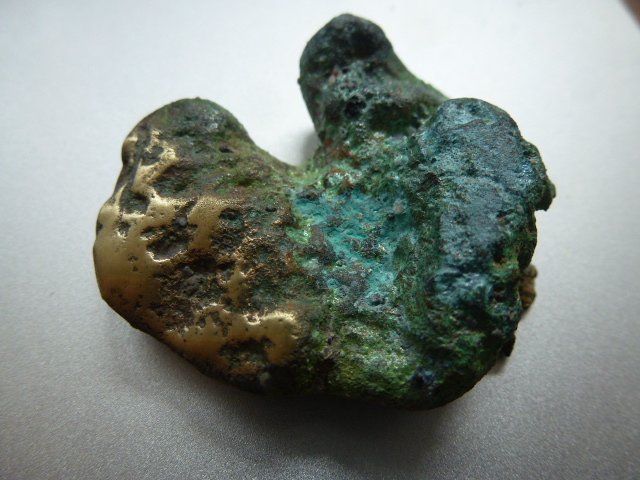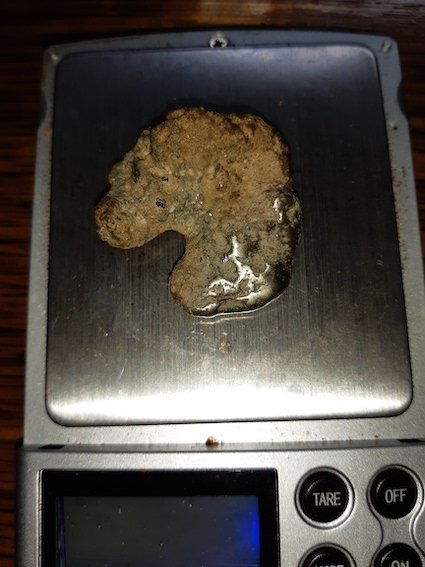- Joined
- Sep 17, 2020
- Messages
- 8
- Reaction score
- 13
Any ideas on what this might be? Found with a detector in a known gold area. It was about 3 inches in the ground near the top of a large pile of dirt dug from a shaft. I polished the end with a soft buff on a grinder. The original colour was similar to the surrounding ground it was found in and only turned green when I soaked it in vinegar to get the 'soil' off. About 35 long and 30 wide - and weighs in at 52 grams. Showed a pic to a geologist, who wasn't sure, and to an experienced 'detectorist' who suggested it was slag from a ingot pour.
Any ideas appreciated.

Any ideas appreciated.






